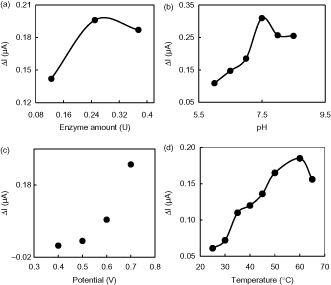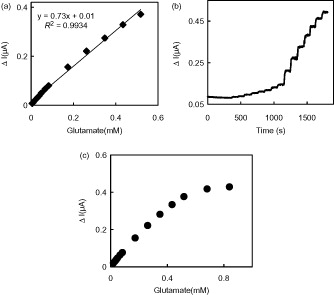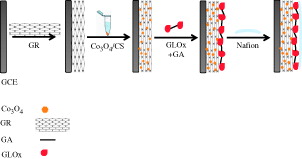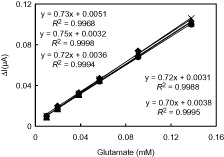Figures & data
Table 1. The performance parameters and the optimum working conditions of the biosensor.
Table 2. Characteristics of various amperometric glutamate biosensors.






